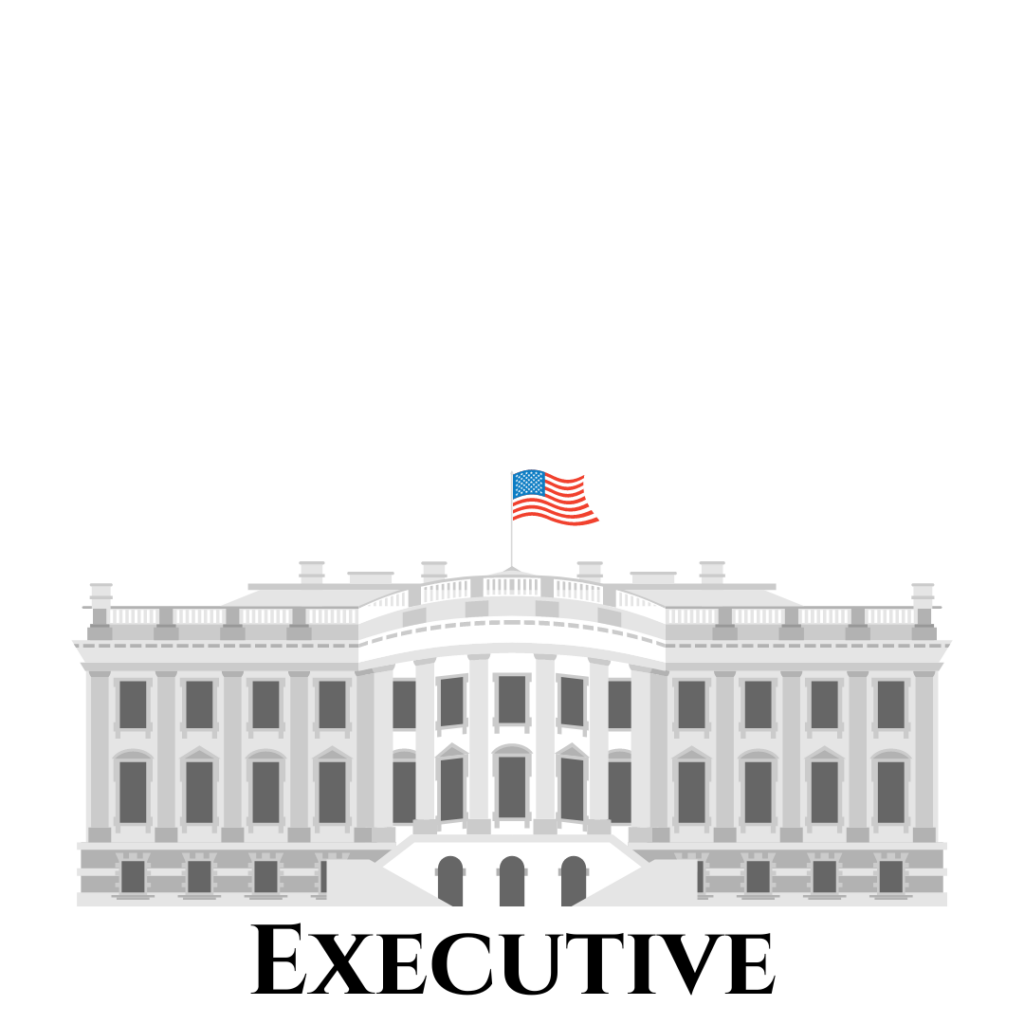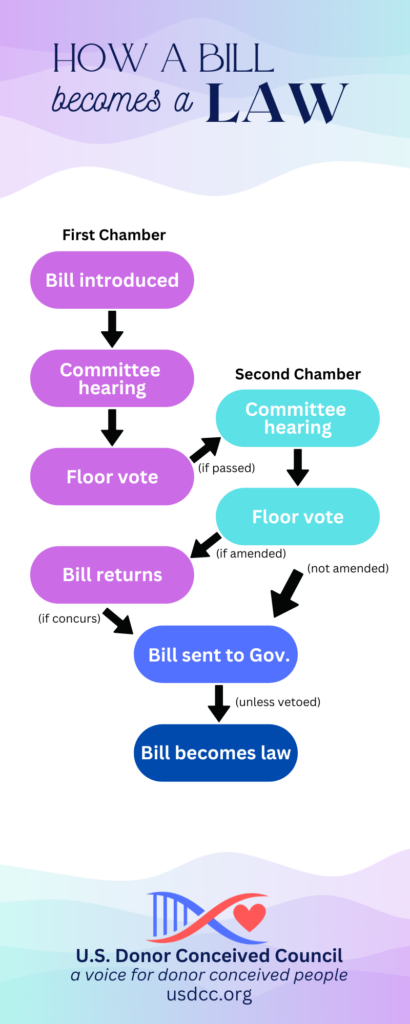
The legislative process is time consuming at the federal and state level, sometimes taking years for a bill to become a law. But after a bill is introduced, what happens? To answer that question, let’s first review the three branches of government at the state and federal levels.
The Three Branches of Government

Enforces Laws
Federal: President of the United States, Vice President, Cabinet members
State: Governor, Lieutenant Governor, Cabinet members

Enacts Laws
Federal: United States Senate, United States House of Representatives
State: State Senate, State House

Interprets Laws
Federal: Supreme Court of the United States, Circuit appellate courts, District trial courts
State: State Supreme Court, State Court of Appeals, State trial courts
The Executive Branch enforces laws after they are enacted. When a question arises about a law’s meaning or application, the Judicial Branch interprets the law to resolve the dispute. But before any of that happens, the Legislative Branch must enact laws.
Before the Legislative Branch can enact a law, a proposed law must be introduced by way of a bill.
Types of Bills
Bills come in many shapes and sizes depending on what needs to be accomplished.
STANDALONE BILL
a bill focusing on a single issue/topic
OMNIBUS BILL
one bill that includes several different measures
CONFERENCE BILL
used when a bill’s language needs reconciliation due to disagreement between the legislative chambers
PLACEHOLDER BILL
used to meet filing deadlines before a bill’s proposed language is ready
AMENDMENTS
changes made to a bill’s proposed language
RESOLUTION
expresses the opinion of a legislative chamber
From Bill to Law

The idea for a bill can come from anyone, anywhere. Legislators work with their staff and stakeholders to draft language for bills before introducing a bill in the legislator’s respective chamber (i.e., the House or Senate). Each bill is first considered by at least one committee (generally one with knowledge about the topic the bill concerns), which then hears testimony from supporters and opponents of the bill before voting.
If the bill passes the committee vote, it continues on for consideration by the respective chamber for what is called a floor vote. Depending upon the debates that follow, the bill could be amended and require additional work and consideration. The bill must receive enough votes to pass over to the second legislative chamber if it will survive to become a law.
Once a bill receives enough votes to leave its initial chamber, it will go through the same process in the second chamber (i.e., the bill will be considered by a committee and must pass through the committee before it is considered for a chamber floor vote). Sometimes the second chamber makes amendments that do not match the language approved by the first chamber. Both chambers must vote and agree on identical bill language before the end of the legislative session or the bill will die.
After both the House and Senate agree on a bill and its language, the bill passes and proceeds to either the President (federal) or Governor (state) for signature. The President or Governor have the power to veto the bill, which stops the bill from becoming a law. After the President or Governor sign the bill, it is officially enacted into law.
For a real life example of how this process works, read more about USDCC’s work to enact the “Donor-Conceived Persons and Families of Donor-Conceived Persons Protection Act” in Colorado.
Top Image by Jeffrey Hamilton via Unsplash
